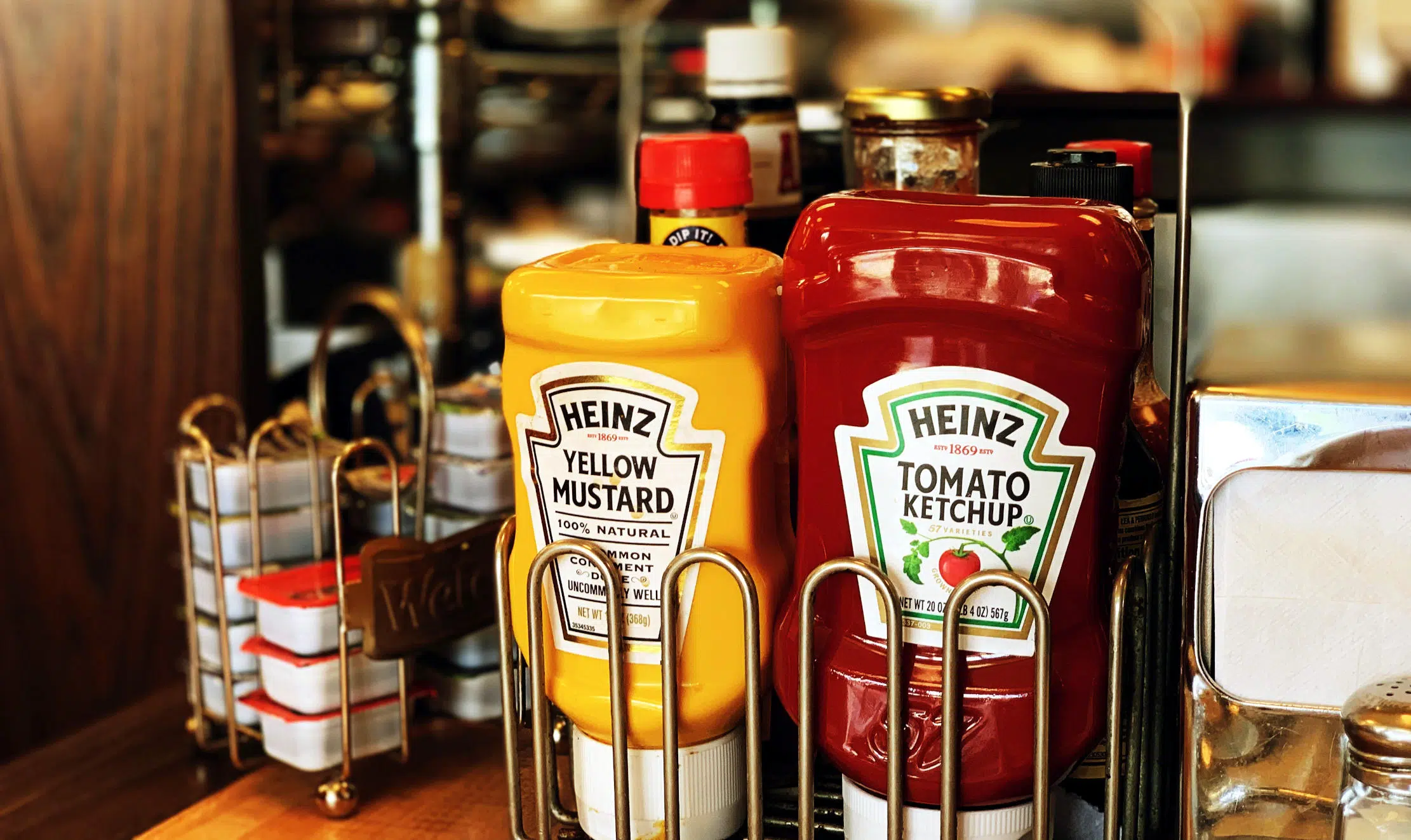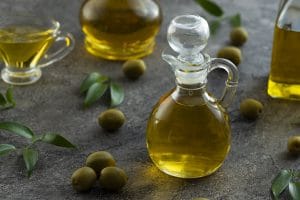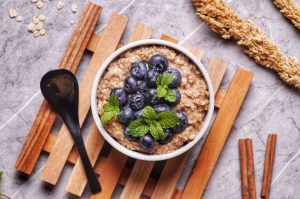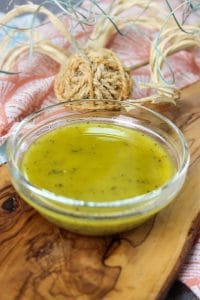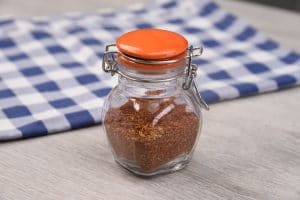The Best Low FODMAP Condiments List
Important Note: When you buy through our links, we may earn a commission. As an Amazon Associate we earn from qualifying purchases. Content, pricing, offers and availability are subject to change at any time - more info.
In recent years, the term “FODMAPS” has become increasingly popular, referring to a group of foods that may be particularly problematic for people who suffer from irritable bowel syndrome. FODMAPs is an acronym for a group of carbohydrates that have been linked to irritable bowel syndrome in various studies.
There are numerous condiments that can be enjoyed on a low FODMAP diet. This list includes soy sauce, Worcestershire sauce, miso paste, balsamic vinegar, tamarind paste, and tahini. Always bear in mind that some of these condiments may be high in FODMAPs if eaten in larger amounts.
“FODMAPs” refers to fermentable oligo-, di-, mono-, and polyols. This is the origin of the acronym, which refers to a category of fermentable carbohydrates that may cause digestive issues in IBS patients.
Understanding Which Condiments To Avoid
While there are countless condiments available on the market today which will help you to enhance the flavor of any meal, there are some condiments that tend to aggravate IBS symptoms. Because of this aggravation, these condiments should be avoided.
Thankfully, this does not mean that you must eat bland and tasteless food. There are many alternative options available that do not compromise on flavor while allowing for a dining experience that does not aggravate any digestive issues.
Sometimes, especially in store-bought condiments, there are certain ingredients that can drastically aggravate IBS symptoms. When looking at condiments, be sure to check the list of ingredients for any potentially digestion-aggravating ingredients.
If you happen upon a condiment that does not list all of its ingredients, you would be best served to avoid it altogether to ensure you do not end up having an adverse reaction to any high FODMAP ingredients incorporated into the condiment itself.
In order to choose low FODMAP condiments, it will serve you to understand which ingredients to avoid. The most commonly found high-FODMAP ingredients in condiments include items such as onion/onion powder, garlic/garlic powder, honey, and corn syrup that is high in fructose.
Something like a bean dip or hummus would also be something to avoid in general because beans are considered high FODMAP. There are a number of other high FODMAP ingredients found in condiments such as apple, grapefruit, blackberry, mango, pear, or peach.
Whether these are found in the whole form, pureed, or juiced, they are all considered high-FODMAP ingredients. Avocado is another high FODMAP ingredient found in some condiments such as guacamole or sandwich spreads.
Mushrooms and cauliflower are sometimes used in condiments such as chutneys, and wheat flour is also sometimes used as a thickener. Cow’s milk or other milk-based products are used in some condiments, and these should naturally be avoided on a low FODMAP diet.
Cashews and pistachios are two nuts that are considered high FODMAP, and these are often used in vegan spreads and sauces. Cream cheese and ricotta cheese are also found in some spreads/sauces, and so are the potentially problematic ingredients like agave, Sorbitol, xylitol, mannitol, and erythritol.
Low FODMAP Condiment Choices
As the awareness and understanding of IBS and the low FODMAP diet is improving, so are the choices of condiments becoming available for purchase. Casa de Sante has created a delicious salsa that is free of garlic and onion, while most pickles and relishes (unsweetened) are also low FODMAP.
Unsweetened Sauerkraut is another great condiment that is well known for being low in FODMAPs. Hot sauce is also not completely out of bounds because there are some on the market that are made using peppers, vinegar, and salt, avoiding high FODMAP ingredients altogether.
There are a number of low FODMAP spice mixes on the market, produced by Casa de Sante, which are free from garlic and onions. There are also certain curry sauces produced with specific ingredients so as to remain low in FODMAPs.
Homemade salad dressings utilizing blends of oil and vinegar will ensure a low FODMAP eating experience, and there are numerous low FODMAP dressings available for purchase, including the usual Caesar dressings and other salad dressings that are free of garlic and onion.
Rao’s produces a low FODMAP tomato sauce, along with a number of other condiments which are low FODMAP friendly. Another option is to cook garlic or scallions in oil, remove them from the oil, and then use the oil as a flavorful condiment.
While most jams and jellies are usually high in honey and high-fructose corn syrup, there are many that are produced without any such ingredients. Other condiments such as mustard, soy sauce, and barbecue sauces are, by their nature, free of high-FODMAP ingredients.
Low FODMAP Condiment 1: Soy Sauce
Soy sauce is low in FODMAPS, meaning that this condiment can be enjoyed in any amount. The usual serving size is 42g (2 tablespoons), and there are very low levels of FODMAPs present in this serving size, meaning that it should easily be tolerated by most people who suffer from IBS.
While most soy sauces are fine, the preferable option is naturally brewed soy sauce. When it comes to soy products, bear in mind that while soy sauce may be low in FODMAPs, other soy products may still have high levels of FODMAPs.
For example, firm tofu, normal soy sauce, and miso tend to have low levels of FODMAPs, while foods such as silken tofu and soy milk (the type that is made using whole soybeans) are much higher in FODMAPs, and should be avoided.
Low FODMAP Condiment 2: Worcestershire Sauce
According to the studies conducted at Monash University, Worcestershire sauce is seen as a low FODMAP condiment option. Created using a base of malt vinegar and flavored using anchovies, onion, garlic, tamarind, and molasses, Worcestershire sauce ought to be high in FODMAPs.
However, because of the fermentation process through which it goes, the FODMAP levels tend to drop, resulting in a low FODMAP condiment despite its high FODMAP ingredients.
Depending on the country you live in, ingredients in Worcestershire sauce may differ, so its worth bearing this in mind when shopping for a low FODMAP condiment.
Overall, the serving size for Worcestershire sauce is two tablespoons, and this should be tolerable to anybody, irrespective of the slightly different ingredients in their country.
Low FODMAP Condiment 3: Miso Paste
Miso is made through the fermentation of soybeans. This staple ingredient in Japanese cooking is low FODMAP in a 12g serving size, which is approximately two teaspoons. It is usually used while cooking and can be used in a host of recipes due to its delicious umami flavor profile.
Low FODMAP Condiment 4: Balsamic Vinegar
While balsamic vinegar is considered a low FODMAP condiment, this rating usually only stands true in servings of around one tablespoon. Any serving larger than this, such as two tablespoons, contains moderate levels of fructose which could potentially aggravate IBS symptoms.
Low FODMAP Condiment 5: Mayonnaise
Mayonnaise prepared in a factory is usually a low FODMAP food. Mayonnaise is usually made using egg yolks, vinegar/lemon juice, oil (vegetable or olive), and some seasoning. You should check, however, that there is no onion or garlic powder in the ingredients making up your mayonnaise.
Sometimes onion or garlic can be hidden under the terms “natural flavors” or “spices,” and so if you are uncertain, it’s best to contact the manufacturer to ensure there are no high FODMAP ingredients lurking in the ingredient list.
A serving size of 2 tablespoons of mayonnaise is considered low FODMAP.
Low FODMAP Condiment 6: Tamarind Paste
The tamarind fruit is used to make this sticky paste with a sour flavor profile. Mostly used in Thai cooking, Tamarind paste is low FODMAP in servings of half a tablespoon.
Any serving larger than this (such as three tablespoons) would be considered high in FODMAPs as servings of this size contain moderate levels of fructans.
Low FODMAP Condiment 7: Oyster Sauce
Oysters or oyster extract is used to make this condiment and is combined with salt and sugar. It is widely used in Thai cooking, as well as Vietnamese and Cantonese cuisine, making a great addition to any Asian stir-fry.
One tablespoon is a safe serving size; however, anything more than this, such as two tablespoons, would be considered high in FODMAPs and should therefore be avoided.
Low FODMAP Condiment 8: Mustard
Mustard is a highly versatile condiment that is widely used in a variety of dishes, so you will be relieved to know it is indeed low in FODMAPs. Some versions of mustard tend to contain garlic or onion, so this is something that you should always check for.
Low FODMAP Condiment 9: Tahini
Tahini is a delicious condiment that can be used in a variety of dishes. While it is considered high in FODMAPs in large amounts, a 20g (or one tablespoon serving) is still considered to be low FODMAP, meaning that you don’t have to miss out on this brilliantly nutty condiment.
FODMAPs Explained
There is a method for determining the levels of FODMAP carbohydrates in order to distinguish between low and high FODMAP foods, and items are classed as high FODMAP when they exceed a certain threshold.
The oligosaccharide criteria are 0.3 grams of fructans or galactooligosaccharides (GOS). When it comes to Disaccharides, the important threshold is 4 grams of lactose.
When it comes to monosaccharides, a diet is considered high FODMAP if it contains 0.2 grams more fructose than glucose. Foods containing 0.3 grams or more of mannitol or Sorbitol are considered high FODMAP when it comes to polyols.
Two universities have done extensive research on FODMAP meals and have meticulously defined what defines a high FODMAP cuisine. The two universities in dispute are Monash University and King’s College London.
It’s crucial to remember that FODMAPs aren’t for everyone. These food groups can be especially advantageous to some people; thus, they shouldn’t be avoided in this scenario. If people who can stomach certain meals avoid them, they may face food shortages.
If you can’t tolerate high FODMAP meals, you should replace them with low FODMAP alternatives to retain appropriate nutrition in your diet. Learn more all about low FODMAP with all thorough post about it here.
Why FODMAPs Are Bad For Some People
In general, FODMAPs are poorly absorbed by the small intestine. While traveling through the small intestine, they move slowly and attract water. FODMAPs are then processed by specific bacteria in the large intestine, resulting in gas production.
In persons who are intolerant to these foods, which are typically IBS sufferers, consequent symptoms such as flatulence, diarrhea, and bloating tend to arise when combined with the increased water and gas.
Not everyone with IBS will react to all of the distinct FODMAP groups, which is why it’s critical to speak with a nutritionist to figure out which FODMAP foods are causing your symptoms.
Where Are FODMAPs Found?
When it comes to FODMAPs, wheat is one of the worst offenders. Wheat is usually eaten in large amounts, so while it is not a highly concentrated source of FODMAPs, the number of FODMAPs consumed when eating wheat remains significant.
Low-FODMAP foods include flavorings and thickeners, as well as any other foods that contain wheat in minor amounts. This is because wheat has very few FODMAPs by weight.
Wheat is mostly found in foods like bread, spaghetti, and morning cereals. To replace the above-mentioned wheat-containing foods, there are some low-FODMAP options. Brown rice, buckwheat, oats, millet, polenta, tapioca, and quinoa are among them.
FODMAPs can also be found in garlic. Garlic contains a high concentration of FODMAPs; therefore, it’s a food you should avoid if you’re sensitive to them. Fructans are the most common form of FODMAP found in garlic.
The amount of fructans in garlic varies substantially depending on the form in which it is found. When comparing fresh garlic to dried garlic, for example, dried garlic has over three times the amount of fructans.
While garlic contains a lot of FODMAPs, it has a lot of health benefits and should only be avoided by FODMAP-sensitive persons. If you’re allergic to FODMAPs, consider chives, fenugreek, pepper, lemongrass, mustard seeds, turmeric, or saffron as a replacement.
Another well-known high-FODMAP food is onions. This ubiquitous food item contains a significant amount of FODMAPs, making it very problematic for IBS sufferers. Fructans are the primary source of FODMAPs in carrots, and their quantities vary depending on the variety.
Asafoetida, a spice commonly used in Indian cuisine, can be used in place of onions. It should be fried in hot oil before usage and then added to the food in little portions.
Many fruits, vegetables, beans, and pulses, as well as artificial sweeteners, are high in FODMAPs.
Being restricted to a low FODMAP diet does not mean that you need to sacrifice flavor. Numerous condiments exist that are safe to consume on a low FODMAP diet, and there are also some low FODMAP versions of your favorite condiments available in stores.
